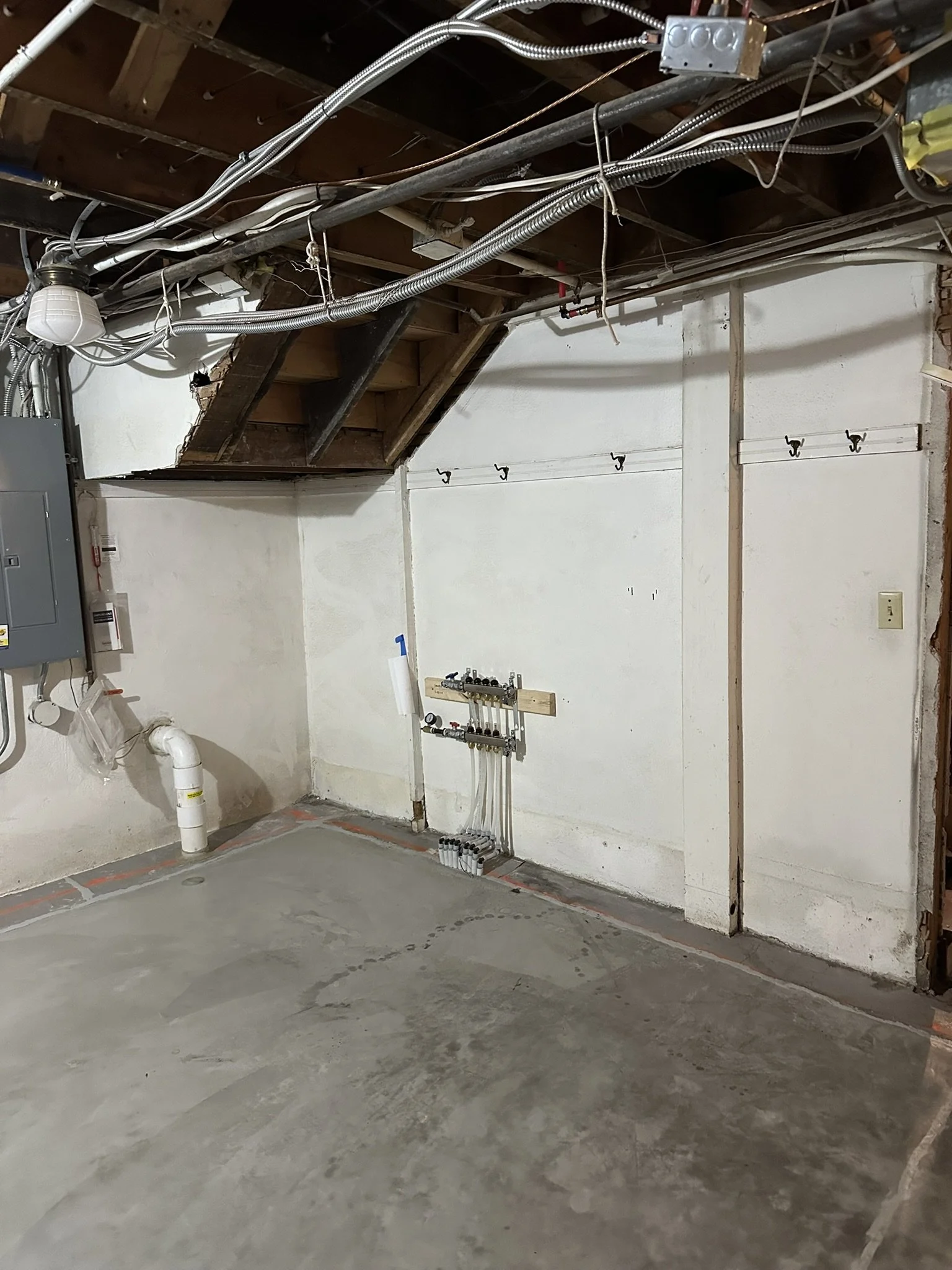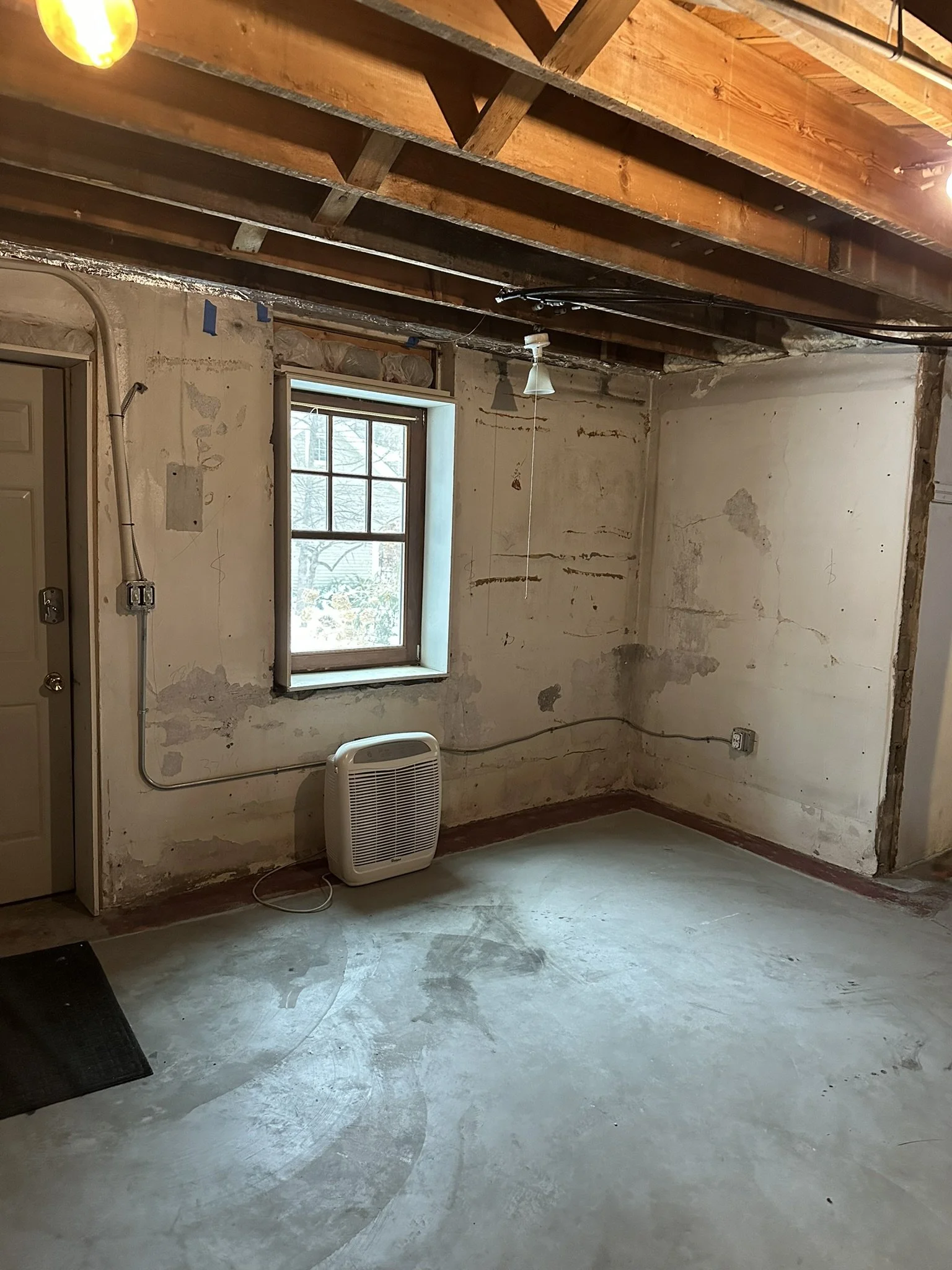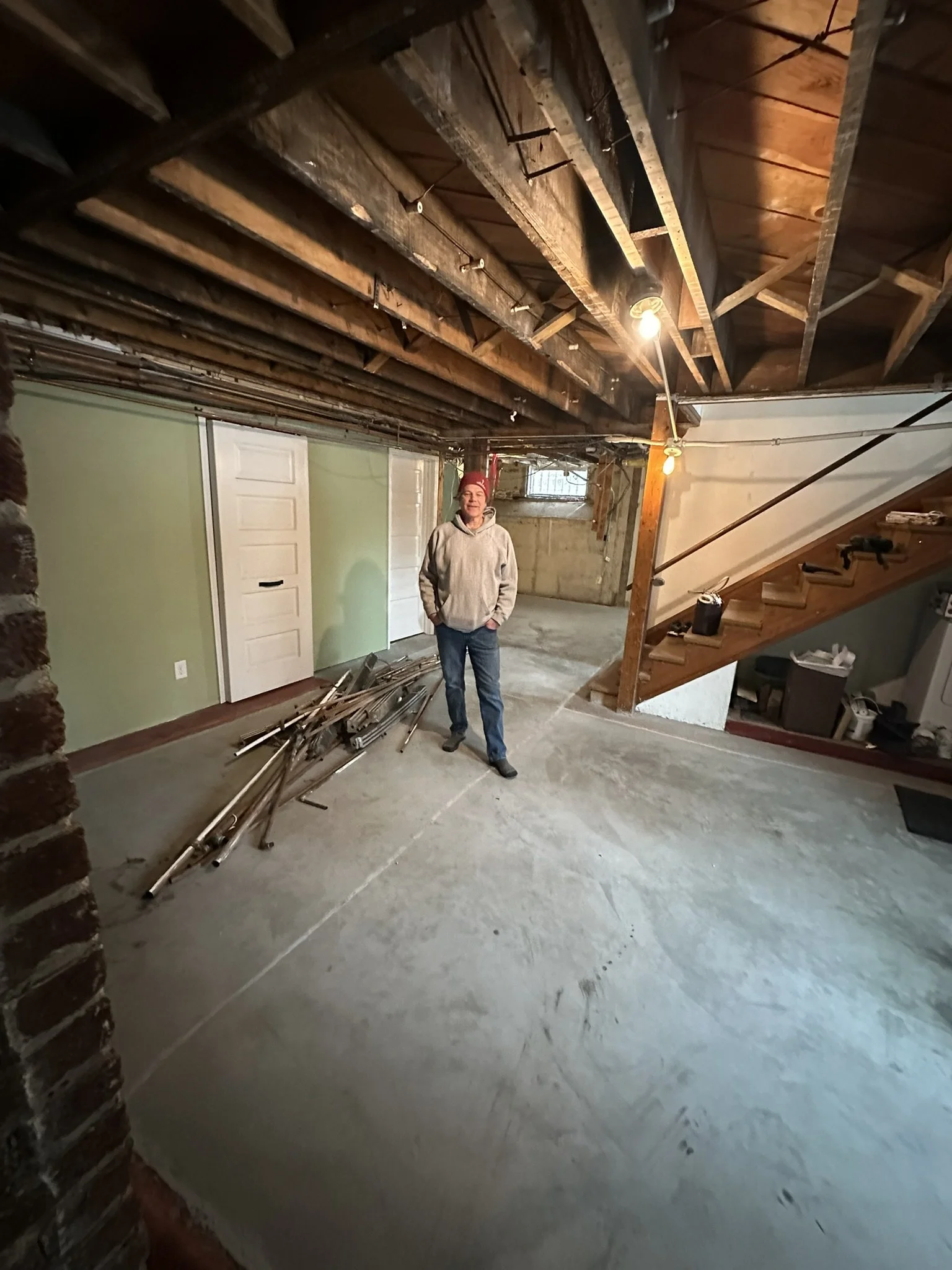A Basement Floor Is Teaching Me About Moisture In The Walls
When we finally started insulating the basement floor, I wasn’t thinking much about the walls. Floors are immediate. We needed to walk on them. Walls? They’re just there and I could think about them after we finished the floors.
It wasn’t until a local building engineer left a comment on one of my articles—kindly pointing out the potential for moisture issues in basements—that I began to second-guess my priorities. He said the walls of the basement “…will be even colder than they are now if you add insulation, and you have to keep basement air from reaching them to condense water on their surface, and growing mold behind the new wall finishes. These details are very important and I am sure your readers would be interested in your decision process…”
He wasn’t wrong, but at the time, I dismissed it with a shrug. We’d just finished insulating the rim joists with closed-cell spray foam, which seemed to be doing its job, keeping out the biting -15°F cold we’ve been having here in Minnesota. The floor, though, was my immediate concern. I was desperate to pour the concrete and finally stop tiptoeing across the makeshift planks we’d laid down to access the bathroom.
But his suggestion lingered. Should I be more worried about moisture in the walls?
After we removed the old cement in the floor, I tried to forget about the walls while the plumbers replaced the old pipes, insulation was laid down and finally, new cement was poured.
The concrete guy was next on the schedule, and suddenly I was panicking. Was I ready for him? I’d already made a plan for a new floor assembly with Derk, my architect friend: 10” of digging for the radon fan pipe, gravel, vapor barrier, insulation, in floor heating tubes and finally concrete but that seemed like it was months ago. Whenever I hit these moments of doubt, I consult my secret weapon: one of several AI chatbots trained on Department of Energy resources. It’s infinitely patient with my endless questions: If I do X, what happens to Y? Is this product better than that one? It even understands that I’ll inevitably revise my plans halfway through a project.
The chatbot is, in many ways, like a second contractor—except it doesn’t send invoices or roll its eyes when I ask, for the tenth time, “What is the best material for the vapor barrier?” It was the chatbot that first told me about PERMINATOR under slab vapor barriers, a product name that sounds like it belongs in a sci-fi blockbuster. The builder we’ve since been consulting with was thinking the same thing and sent me the link.
The PERMINATOR felt like a very practical tool. Its job is to seal out moisture and radon and protect my brand-new insulated floor. We just needed an open minded concrete contractor to install it.
Fortunately, concrete contractors are pretty much idle in December in Minnesota. To get a reference, I called one of the leading pumpers, the guys with the big trucks with the giant cones on the back that spin around. He recommended several installers that could do my floor, but one in particular.
At first, I had just a call with this concrete guy, then a text, and luckily he was open to emails. Finally, I decided to take a risk and tell him about my AI assistant, and how “we” might have a few questions and want to do things in a different way.
Someone might not get excited that 2” of XPS foam board is sturdier than EPS, the foam commonly used for floor insulation. But for me and my chatbot, it was a revelation. With in-floor heating to install—and plenty of people expected to walk across it—I knew I needed something that could hold up to the job.
And then there was the PERMINATOR vapor barrier, which turned out to resemble what the cement contractor jokingly called a “swimming pool liner.” To his credit, he and his crew were game for that as well, even if it wasn’t exactly their usual material. They sourced the materials and knocked out the prep work in a few hours, unrolling the shiny blue liner across the floor like they were setting up for some strange, underground pool party.
Onto the point of this post. The floor, it turns out, taught me something very important about the walls. Specifically, it taught me about condensation: how if warm, moist air in the basement meets a cold surface - even if it was under the foam boards - it would create droplets of water where I least wanted them. This happened all over the floor.
Moisture due to condensation collecting on cold basement floor - under the insulation.
Without a proper wall assembly - insulation with no gaps against the cold wall** and a vapor barrier on top facing the inside to make sure no moisture gets behind it - I was setting myself up for a headache—and possibly some very unwanted indoor swimming pools.
The building engineer was right! Now, I’m doing my best to plan ahead for the walls!
**some say leave a small air gap behind the foam boards that are against the walls as long as the fronts are tightly sealed with a vapor barrier















